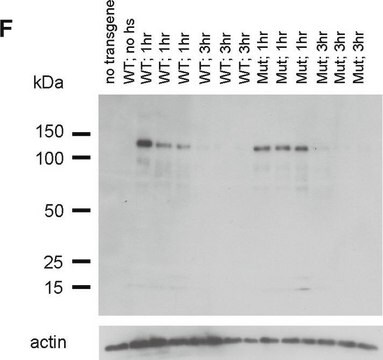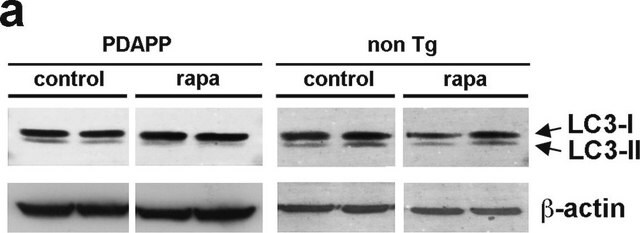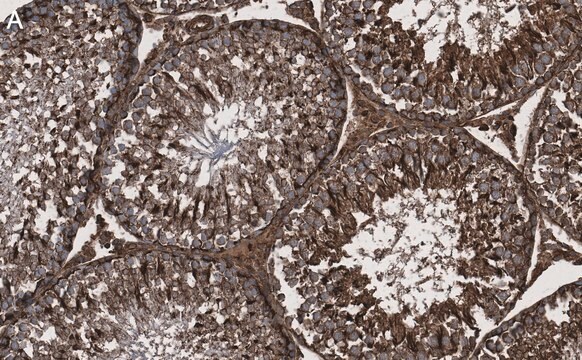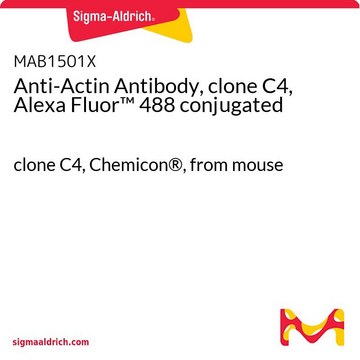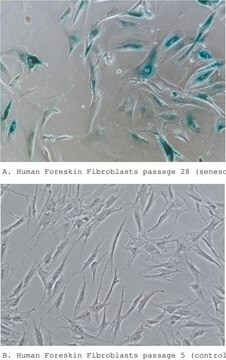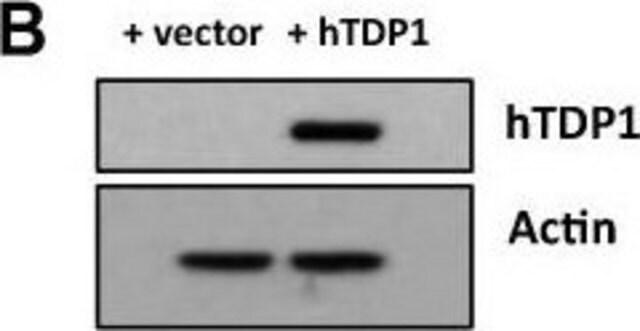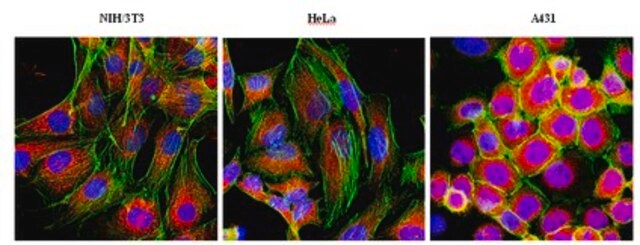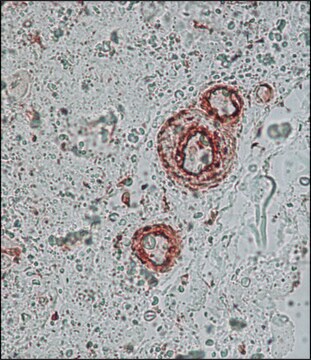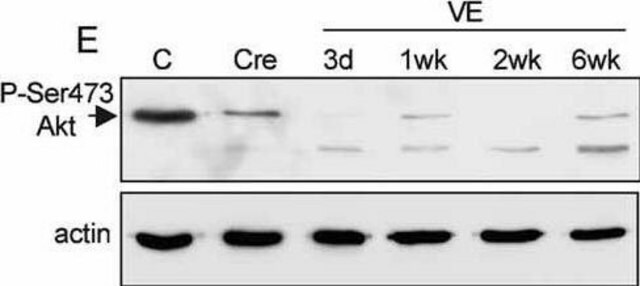MAB1501
Anti-Actin Antibody, clone C4
ascites fluid, clone C4, Chemicon®
Synonim(y):
MAB1501X, MAB1501R, Pan Actin antibody
About This Item
Polecane produkty
pochodzenie biologiczne
mouse
Poziom jakości
forma przeciwciała
ascites fluid
rodzaj przeciwciała
primary antibodies
klon
C4, monoclonal
reaktywność gatunkowa (przewidywana na podstawie homologii)
all
producent / nazwa handlowa
Chemicon®
metody
ELISA: suitable
immunocytochemistry: suitable
immunofluorescence: suitable
immunohistochemistry (formalin-fixed, paraffin-embedded sections): suitable
western blot: suitable
izotyp
IgG2bκ
numer dostępu NCBI
numer dostępu UniProt
docelowa modyfikacja potranslacyjna
unmodified
informacje o genach
human ... ACTA1(58)
Opis ogólny
Specyficzność
Immunogen
Zastosowanie
Tissue culture cells -- fix with formaldehyde, treat with methanol or acetone.
Glycerinated myofibrils -- fix fibers with formaldehyde, treat with cold methanol. Stains I-bands intensely and stress fibers in human fibroblasts.
Cryostat sections (6 µm) -- quick frozen in isopentane, slides treated with gelatin and formaldehyde.
Immunoblots:
1:100-1:1,000 (Otey, 1987):On muscle homogenates subject to SDS-PAGE, reacts relatively uniformly with a 43 kD protein present in skeletal, cardiac, gizzard and aorta tissues. Appears to react with all isoforms of actin found in these preparations and shows a strong reaction with the alpha-actin found in skeletal, cardiac, and arterial muscle.
Iodination (Lessard, 1979).
Solid phase binding assay ELISA:
1:800-1:1,000 dilution from a previous lot was shown to be strongly reactive with cytoplasmic actin and shows a significant binding to gizzard, skeletal, arterial and cardiac actins. Also shows a significant binding to both Dictyostelium discoidum and Physarum polycephalum.
ELISA:
strongly reactive with the cytoplasmic actin and shows a significant binding to gizzard, skeletal, arterial and cardiac actins. Also shows a significant binding to both Dictyostelium discoidum and Physarum polycephalum.
Optimal working dilutions must be determined by end user.
Cell Structure
Cytoskeletal Signaling
Jakość
Western Blot Analysis:
1:500 dilution of this lot detected ACTIN on 10 ug of A431 lysates.
Opis wartości docelowych
Powiązanie
Postać fizyczna
Przechowywanie i stabilność
Komentarz do analizy
HeLa whole cell lysate.
Informacje prawne
Oświadczenie o zrzeczeniu się odpowiedzialności
Nie możesz znaleźć właściwego produktu?
Wypróbuj nasz Narzędzie selektora produktów.
polecane
Kod klasy składowania
10 - Combustible liquids
Klasa zagrożenia wodnego (WGK)
WGK 1
Temperatura zapłonu (°F)
Not applicable
Temperatura zapłonu (°C)
Not applicable
Certyfikaty analizy (CoA)
Poszukaj Certyfikaty analizy (CoA), wpisując numer partii/serii produktów. Numery serii i partii można znaleźć na etykiecie produktu po słowach „seria” lub „partia”.
Masz już ten produkt?
Dokumenty związane z niedawno zakupionymi produktami zostały zamieszczone w Bibliotece dokumentów.
Klienci oglądali również te produkty
Produkty
Immunofluorescencja wykorzystuje cząsteczki fluorescencyjne sprzężone z przeciwciałami do lokalizacji białek, potwierdzania modyfikacji i wizualizacji kompleksów białkowych.
Nasz zespół naukowców ma doświadczenie we wszystkich obszarach badań, w tym w naukach przyrodniczych, materiałoznawstwie, syntezie chemicznej, chromatografii, analityce i wielu innych dziedzinach.
Skontaktuj się z zespołem ds. pomocy technicznej